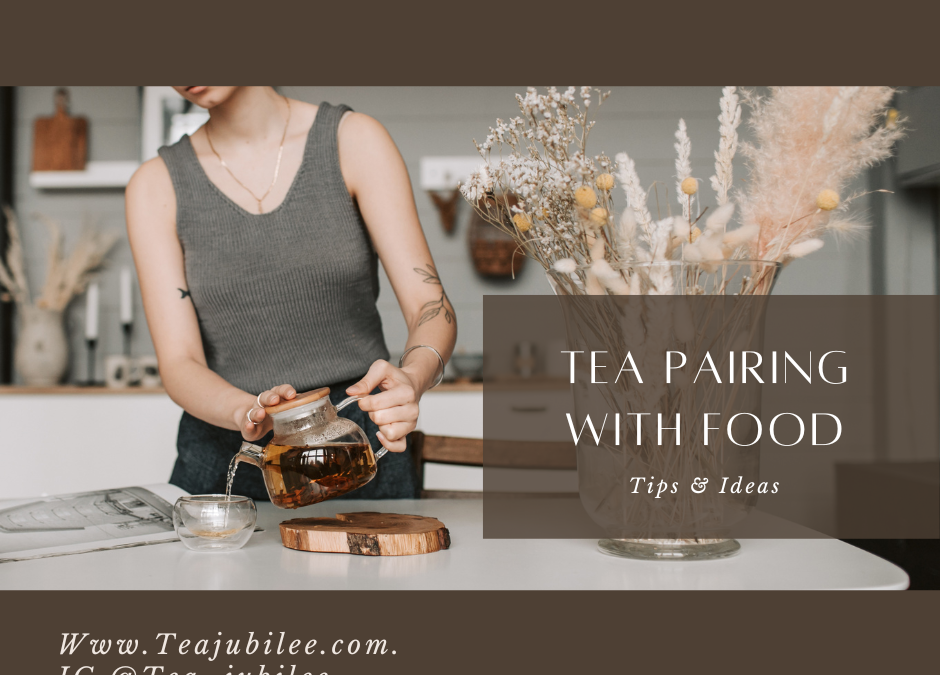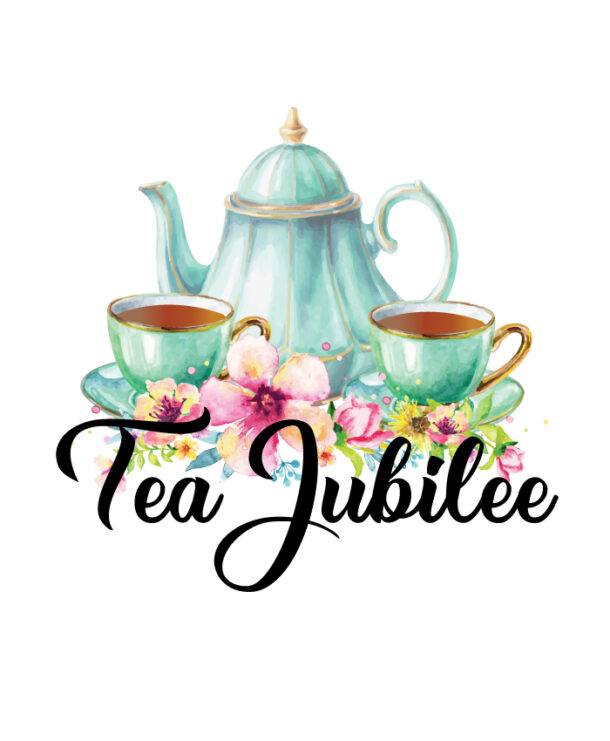==================
A Caveat and Affiliates
First off, a little caveat: within my articles you will find affiliate links, meaning if you buy them, I get a small commission. Your cost is not affected. In addition, I am an Amazon Associate and I earn from qualifying purchases on Amazon.
And yes, if I say that I recommend a product here, it means I truly believe it is a good product. I refuse to recommend any product that I have not researched and believe to be a good value.
Even better, I provide you with a very clear picture of the product, it’s use, and the probable value.
Earning your trust is important to me. I run this website myself and the commissions and donations help support the site.
Sound reasonable and fair enough? Let’s continue to the article.
==================
Contents
Tea Pairing with Food: Enhancing Flavors on Your Table
Tea Pairing with Food is an art that enhances the dining experience through complementary flavors. Like wine, different types of tea can bring out unique aspects of the brew and the dish, creating a harmonious blend of tastes. The key to a successful pairing lies in the balance of flavors, where the tea should neither overpower the food nor be too subtle to notice.
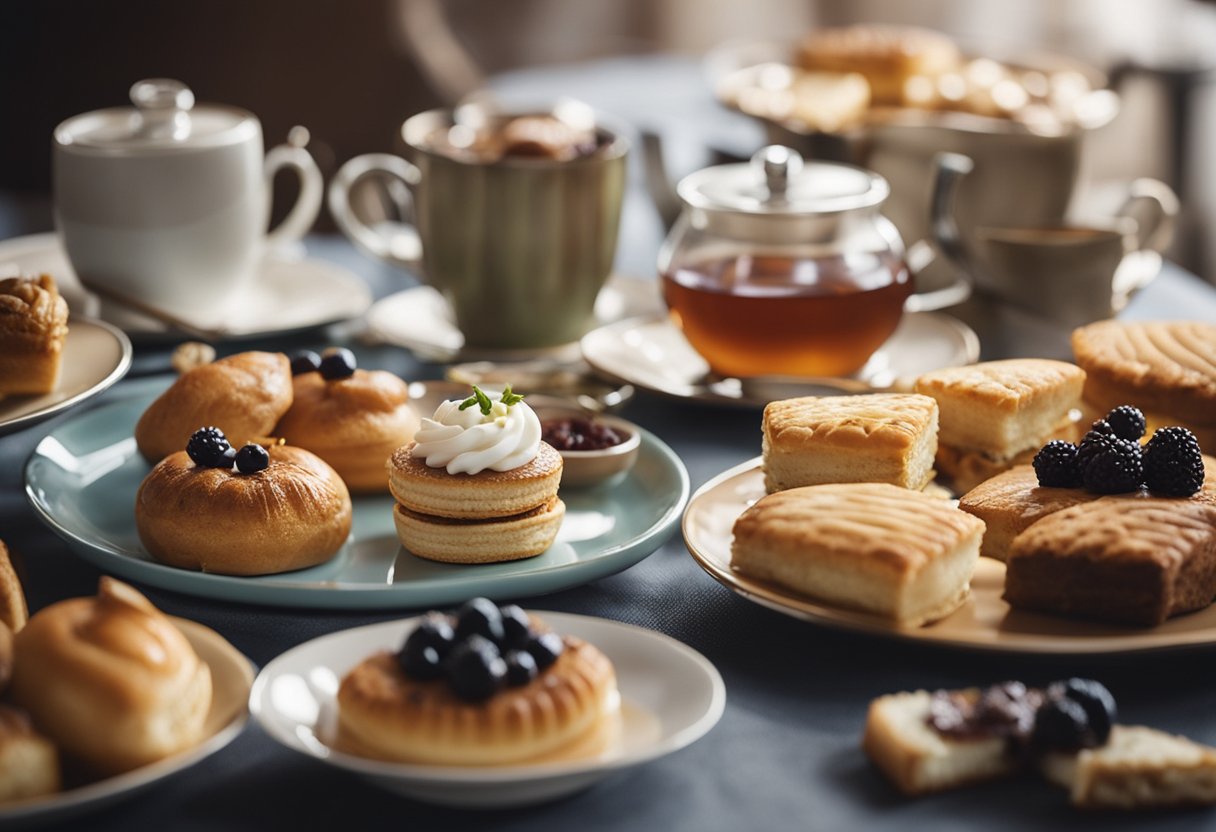
Selecting the right tea involves considering its body, astringency, and aroma in relation to the food’s texture, richness, and spice. For instance, a light green tea might pair well with delicate seafood or a fresh salad, while the robustness of black tea could stand up to the strong flavors of a spicy curry or a rich chocolate dessert. The temperature of the tea can also play a role, with hot teas opening up the palate and cold teas offering a refreshing counterpoint to heavier dishes.
Experimentation is encouraged in the pursuit of the perfect tea and food combination. The interaction between the tannins in tea and the flavors of the food can result in a heightened taste experience. Whether it’s a casual meal or a fine dining event, considering the pairing of tea can add an extra dimension of flavor and sophistication to the table.
Fundamentals of Tea and Food Pairing
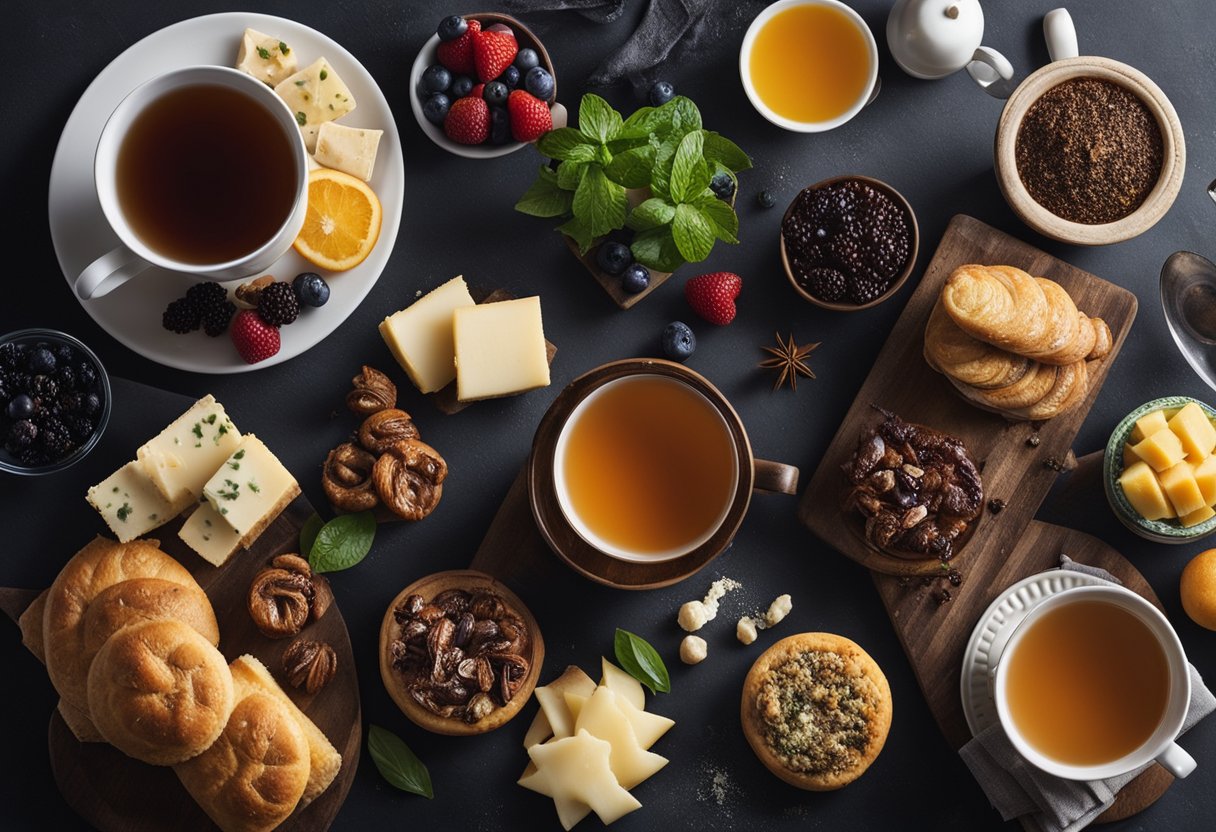
Pairing tea with food involves matching similar or complementary flavors to enhance the dining experience. The key lies in understanding the complexities of tea and how they can align with the characteristics of different foods.
Understanding Flavor Profiles
When tea is paired with food, one should consider the basic taste sensations: sweetness, sourness, saltiness, bitterness, and umami. Each type of food possesses a dominant flavor profile, which can be matched or contrasted with the appropriate tea. For example:
- Sweet foods: Pair with teas that have a natural sweetness, like some black or oolong teas.
- Savory dishes: Align with teas that offer an umami-rich profile, such as Gyokuro green tea.
Tea Types and Characteristics
Different teas possess unique characteristics that can complement or contrast with food flavors. Below is a brief overview:
| Tea Type | Characteristics | Ideal Food Pairing |
|---|---|---|
| Black Tea | Robust, fully oxidized, with malted or fruity notes. | Rich meats, heavy dishes. |
| Green Tea | Fresh, grassy, with a slight bitterness. | Vegetable dishes, fish. |
| Oolong Tea | Varies from floral to creamy, semi-oxidized. | Light meats, creamy desserts. |
| White Tea | Delicate, subtle sweetness. | Salads, light pastries. |
| Herbal Tea | Depending on the blend, it can be floral, minty, or fruity. | A wide range of foods, depending on the blend. |
| Pu-erh Tea | Earthy, complex, with a depth of flavor after fermentation. | Spicy foods, chocolate. |
Aligning the intensity and flavor profile of the tea with that of the food will create a harmonious dining experience.
Pairing Tea with Different Cuisines
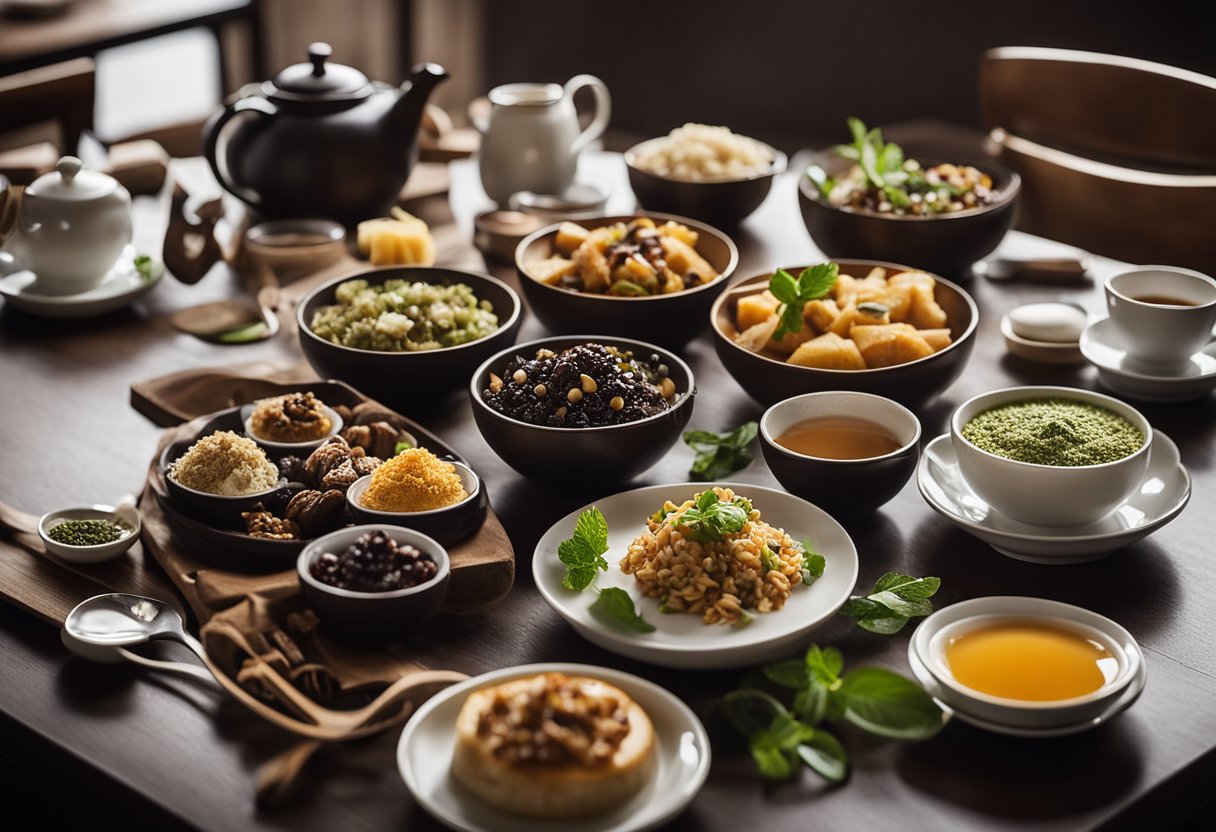
Pairing tea with food enhances the dining experience by complementing flavors. Selecting the right tea can elevate a meal’s taste profile.
Tea with Asian Cuisine
Asian cuisine’s diverse flavors range from spicy to umami-rich dishes. For example:
- Spicy dishes: A smooth, sweet Milk Oolong balances the heat.
- Sushi: A grassy Sencha cleanses the palate between bites.
Tea with European Cuisine
European dishes often have bold and rich flavors. Tea pairings might include:
- French pastries: A light Darjeeling accentuates the delicate textures.
- Italian pasta: A robust Assam stands up to hearty tomato sauces.
Tea with Middle Eastern Cuisine
Middle Eastern cuisine features aromatic spices and grilled meats. Pairings include:
- Kebabs: A minty Moroccan Mint Tea complements the grilled flavors.
- Baklava: A floral Jasmine Tea contrasts the sweetness and richness.
Tea with American Cuisine
American cuisine is known for its diversity, from comfort foods to fusion flavors.
- Barbecue: A smoked Lapsang Souchong mirrors the smoky taste of the meat.
- Apple pie: A spiced Chai matches the warm, cinnamon notes of the dessert.
Tea Pairing for Meals
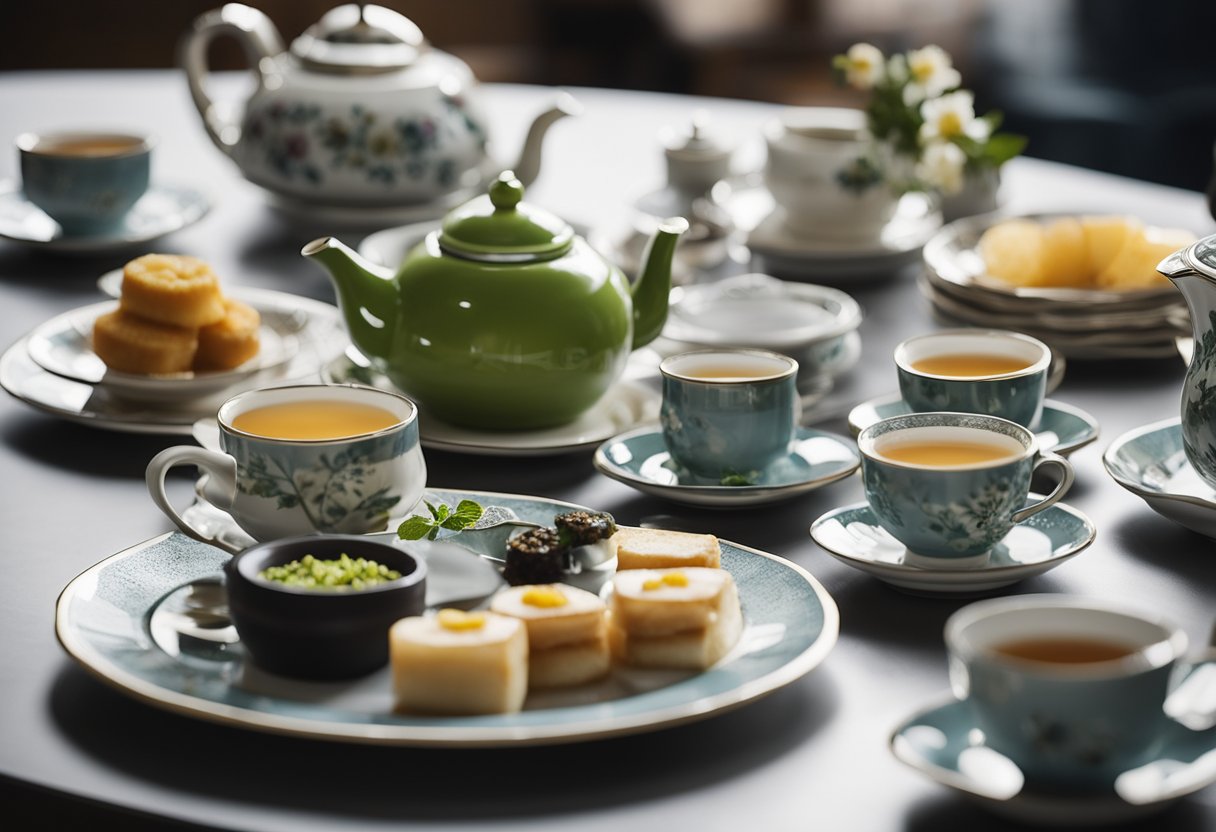
Pairing tea with meals enhances flavors and can provide a comforting, complementary experience. Different types of tea can suit different meals, depending on the time of the day.
Tea with Breakfast
A robust black tea like Assam or English Breakfast pairs well with hearty breakfast foods such as eggs and bacon. These teas have strong flavors that can stand up to rich and savory breakfast dishes. A lighter option, Darjeeling tea, works well with sweet pastries, as its delicate and floral notes do not overpower the subtle flavors of the food.
Tea with Lunch
Lunch varieties, often lighter, match well with green teas. A Sencha or Dragon Well tea pairs nicely with a fresh salad, as their crisp, vegetal qualities complement the greens. For those enjoying a chicken sandwich or fish, a mildly astringent Oolong tea can balance the meal, its complexity working well with a range of lunch options.
Tea with Dinner
Dinner courses, especially when involving spiced dishes or red meat, are ideal with a full-bodied Pu-erh tea. The earthy notes of the tea can enhance the rich flavors of the food. Alternatively, Chamomile tea, known for its calming properties, is excellent with light dinners and helps prepare the body for rest.
Tea Pairing with Specific Foods

Selecting the right tea to complement a meal can enhance flavors and transform a dining experience. Certain teas can balance, contrast, or bring out the depth in various dishes.
Tea with Spicy Foods
When dealing with spicy cuisines, one aims to cool the palate and soothe the heat. Mint green tea is excellent for its refreshing qualities and ability to calm spicy sensations. Alternatively, with its blend of spices, Chai can hold its ground against bold flavors and offer a harmonious mix.
- Mint Green Tea: Cooling effect, refreshing
- Chai: Complementary spices, robust
Tea with Sweet Foods
Sweet foods benefit from teas that provide a contrasting flavor or enhance the sweetness. Black teas, especially with a hint of citrus like Earl Grey, offer a strong counterpoint to the sweetness. For a harmonious pairing, Dessert Oolongs complement sweet pastries and cakes with their natural stone fruit notes.
- Earl Grey: Citrus notes, bold flavor
- Dessert Oolongs: Stone fruit notes enhance sweetness
Tea with Savory Foods
Savory dishes pair well with teas that have a full-bodied flavor or a cleansing effect. Pu-erh tea, with its earthy tones, stands up to hearty meat dishes. For a cleansing palate experience, Green teas such as Sencha can refresh the taste buds after each savory bite.
- Pu-erh Tea: Earthy, complements meat dishes
- Green Teas (e.g., Sencha): Cleansing, palate refreshing
Tea with Seafood
Seafood pairs exquisitely with teas that underscore its delicate flavors. Jasmine green tea imparts a floral note that doesn’t overpower but rather highlights the seafood’s subtle taste. Lighter White teas offer a mild and slightly sweet note that complements rather than competes with the dish.
- Jasmine Green Tea: Floral notes, subtle enhancement
- White Teas: Mild flavor, slight sweetness
Seasonal Tea Pairings
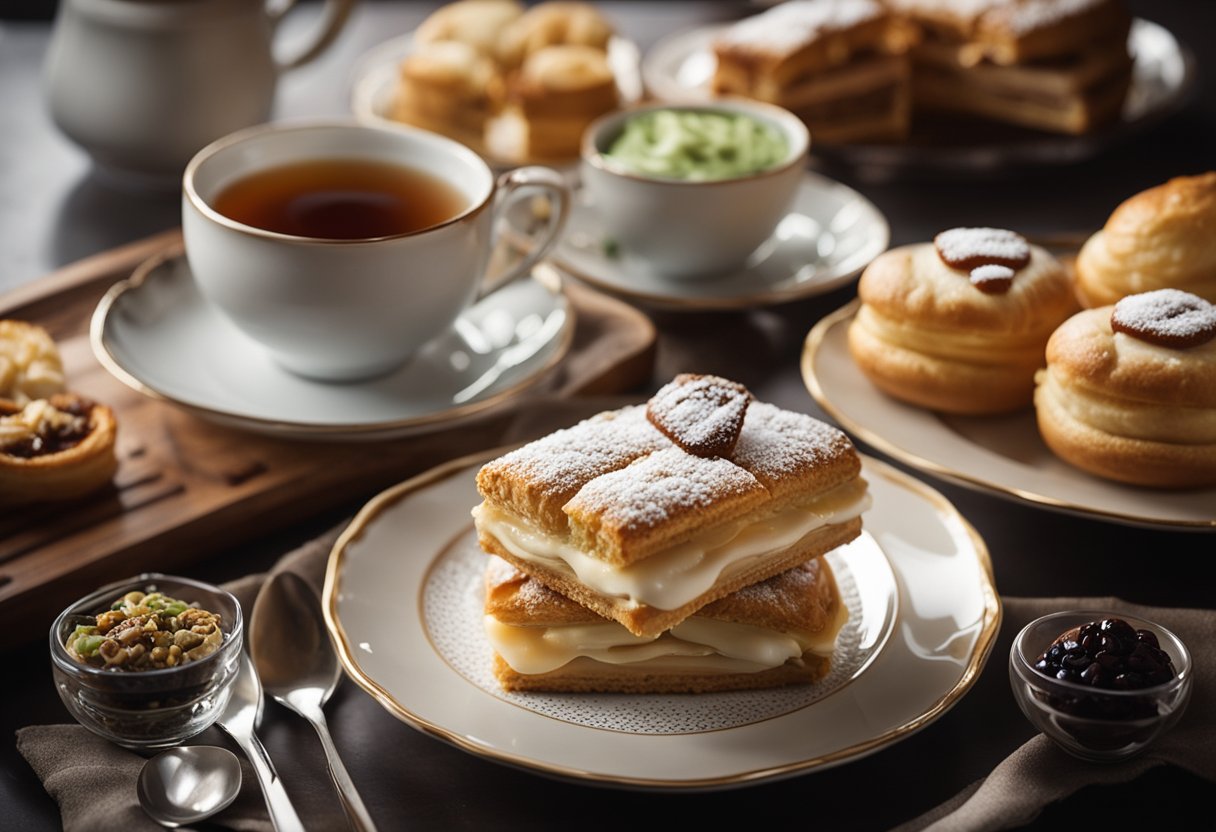
Choosing the right tea to complement the flavors of different foods can enhance a meal significantly. Seasonal ingredients and traditional dishes often pair best with specific types of tea.
Spring and Summer Pairings
Spring brings fresh, green flavors to the table, which are complemented by delicate green teas. For example:
- Dragon Well (Longjing) with steamed fish or a light vegetable stir-fry.
- Jasmine Green Tea with poached chicken or a cucumber salad.
Summer demands refreshing teas paired with vibrant, fresh produce. Fruity white teas or cooling mint infusions work well:
- White Peony (Bai Mudan) with a fruit salad or delicate desserts.
- Moroccan Mint Tea with grilled vegetables or tabbouleh.
Fall and Winter Pairings
Fall introduces rich flavors and heartier dishes, suitable for bolder black teas or spiced chai blends. Consider the following:
- Assam or Keemun with roasted meats and root vegetables.
- Masala Chai with pumpkin pie or spiced apple desserts.
Winter calls for warming, full-bodied teas to accompany substantial meals and holiday treats.
- Lapsang Souchong with smoked meats or strong cheeses.
- Rooibos with gingerbread or lebkuchen.
Health Considerations in Tea Pairing
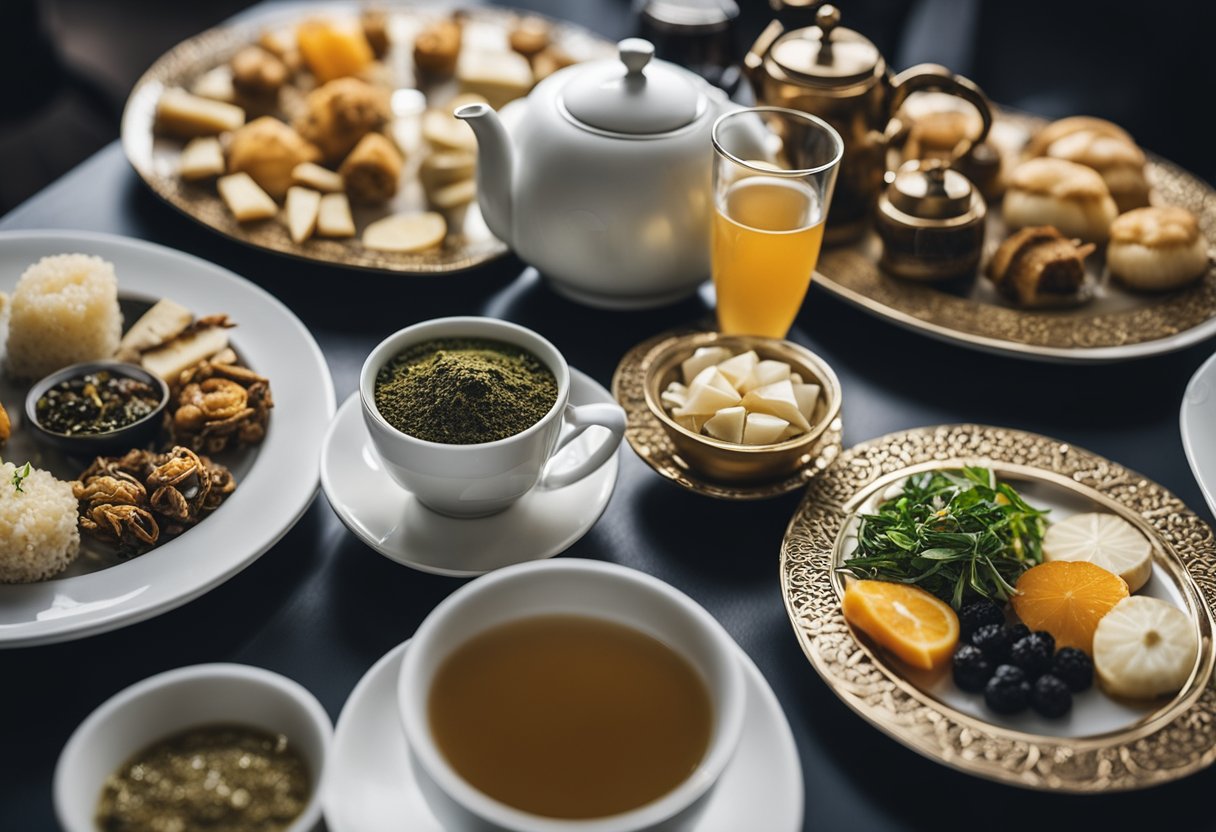
When pairing tea with food, one must consider both the caffeine content, which can affect energy levels and sleep patterns, and the digestive benefits that can influence gut health and digestion.
Caffeine Content
Tea contains varying levels of caffeine, with black tea generally having the most and herbal teas often having none. It’s important to be mindful of caffeine intake, especially in the evening, as it could interfere with sleep.
| Type of Tea | Average Caffeine Content per 8 oz cup |
|---|---|
| Black Tea | 47-90 mg |
| Green Tea | 20-45 mg |
| Oolong Tea | 37-55 mg |
| White Tea | 15-39 mg |
| Herbal Tea | 0 mg |
Opting for herbal teas or decaffeinated versions when pairing with meals can be beneficial for those sensitive to caffeine or looking to reduce their intake.
Digestive Benefits
Different teas can aid in digestion and the body’s ability to process food. Peppermint and ginger teas, for example, are widely recognized for their ability to alleviate digestive discomfort. Similarly, green tea contains catechins that may help in metabolizing fats.
Teas that Aid Digestion:
- Peppermint Tea: Soothes the stomach and can relieve bloating.
- Ginger Tea: Helps with nausea and can promote efficient digestion.
- Green Tea: Contains antioxidants that may assist in digesting fats more effectively.
Selecting a tea that matches the digestibility of a meal not only enhances the dining experience but also supports one’s overall digestive health.
Hosting Tea and Food Events
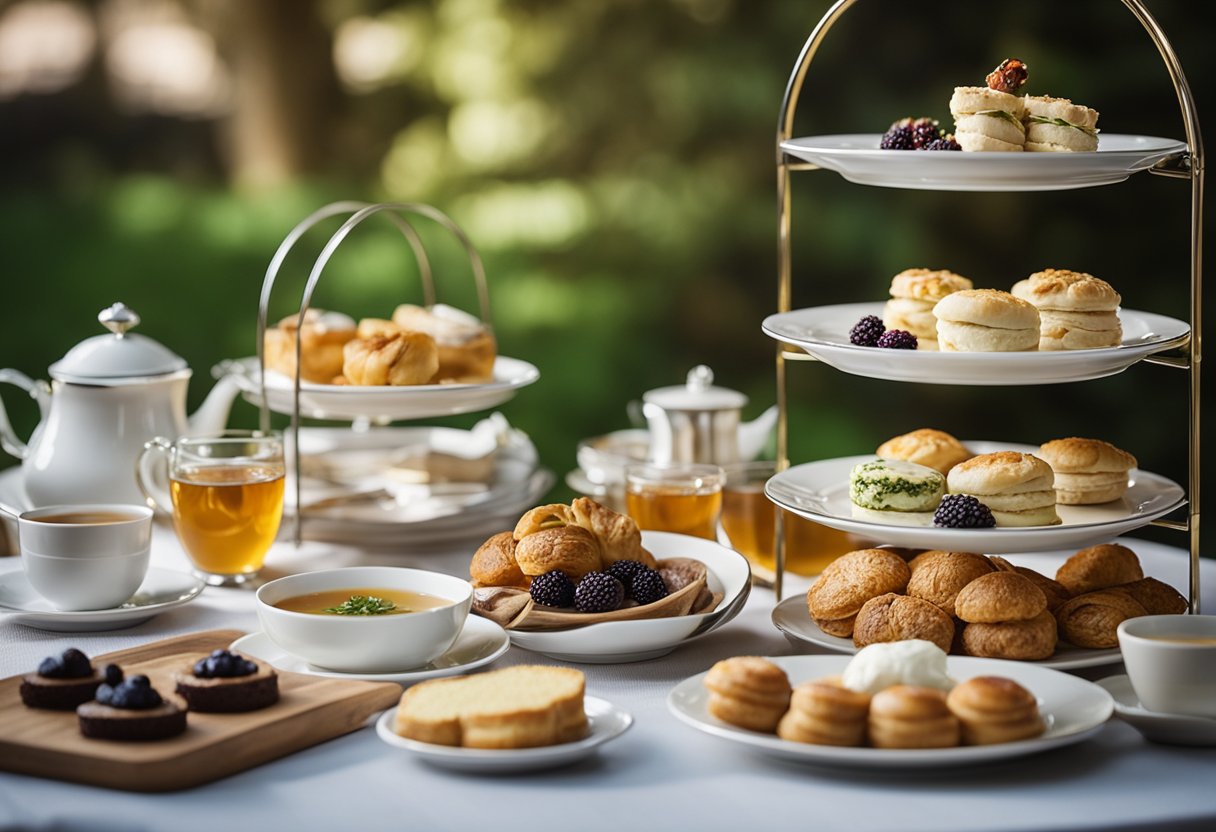
When one considers hosting events centered around tea and food, one should focus on creating an immersive experience that educates and delights the guests. Thoughtful pairing and presentation are pivotal.
Tea Tasting Parties
Tea-tasting parties offer an intimate platform for enthusiasts to explore and enjoy a variety of teas. The Host should present a diverse selection, from white and green teas to oolong, black, and herbal infusions. Here, the sensory journey is paramount. A simple table can help convey the ideal sequence to maximize enjoyment:
| Sequence | Tea Type | Food Pairing |
|---|---|---|
| 1st | White | Light pastries, mild cheeses |
| 2nd | Green | Vegetable dishes, steamed fish |
| 3rd | Oolong | Grilled meats, fruity desserts |
| 4th | Black | Rich chocolate, spicy curries |
| 5th | Herbal Infusions | Fresh fruits, floral or citrus-flavored cakes |
Tea Pairing Workshops
Tea pairing workshops are educational events where participants learn the nuances of tea and food synergy. The Facilitator should offer practical tips on which teas enhance the flavors of specific foods. It’s recommended that teas be grouped with complementary flavor profiles – for example, pairing bold Assam tea with a hearty English breakfast or a delicate jasmine tea with light Asian appetizers. Guests should be provided with hands-on opportunities to mix and match teas and foods, observing how elements like astringency and sweetness interact.
| Tea Type | Recommended Food Pairing |
|---|---|
| Assam | Hearty breakfast foods |
| Jasmine | Light appetizers, dim sum |
| Darjeeling | Scones, cream, and jam |
| Pu-erh | Mushroom dishes, aged cheeses, |
| Chamomile | Honey biscuits, vanilla flavors |
Resources and Guides
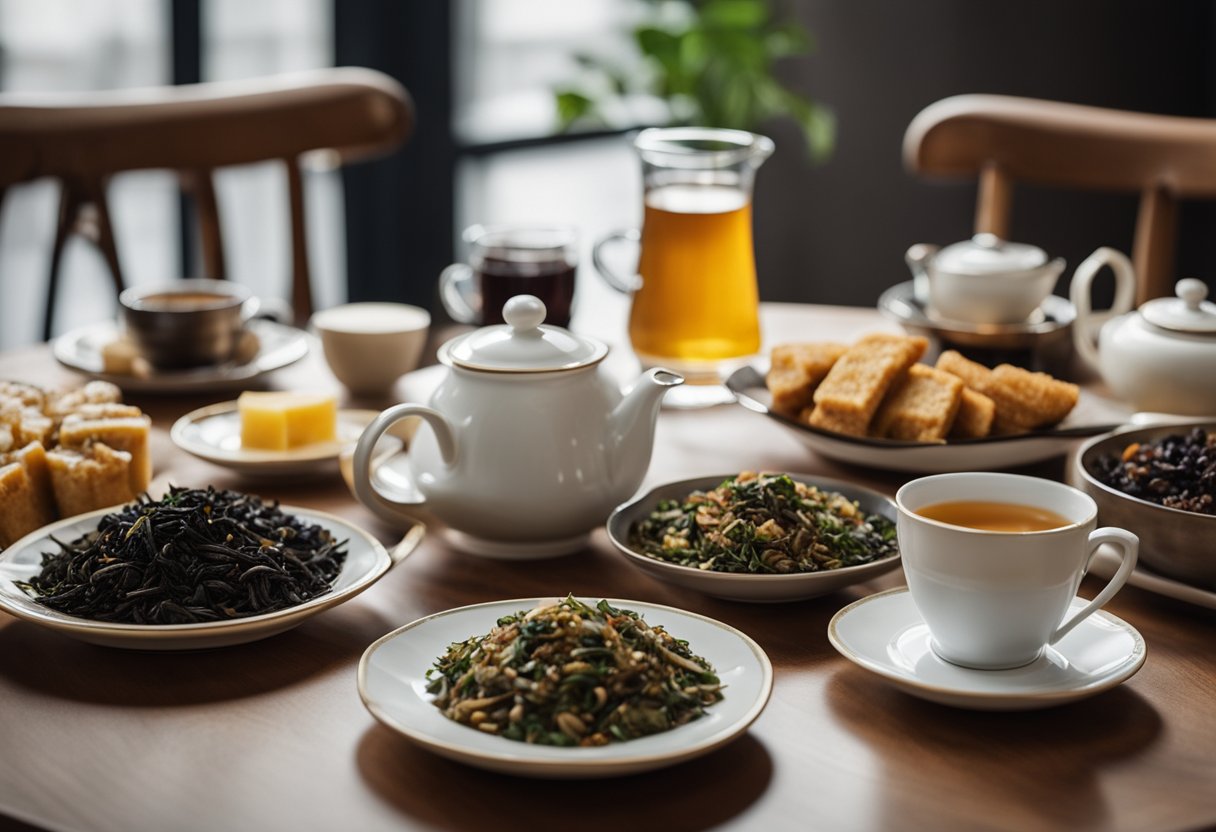
To master the art of tea pairing with food, one can seek knowledge from reputable resources such as specialized books and valuable online platforms.
Books and Articles
- Books:
- The Story of Tea: A Cultural History and Drinking Guide by Mary Lou Heiss and Robert J. Heiss. This in-depth guide offers insights into tea varieties and pairings.
- Tea: History, Terroirs, Varieties by Kevin Gascoyne, Francois Marchand, and Jasmin Desharnais. The authors cover tea cultures across the world and discuss methods for pairing tea with food.
- Articles:
- The Food & Wine article “How to Pair Tea with Food” by Melanie Hansche delivers specific examples of tea and food pairings.
- The Serious Eats guide “Tea and Food Pairing” by Max Falkowitz includes practical tips for coupling different teas with various cuisines.
Online Platforms
- Websites:
- TeaAssociation.org provides comprehensive guidelines and research papers on tea pairing principles.
- TeaEpicure.com offers a curated experience with detailed articles on pairing tea with both sweet and savory dishes.
- Social Media and Forums:
- The r/tea subreddit features community discussions on personal tea-pairing experiments.
- Tea bloggers on Instagram, such as @teathoughts and @teawithjann, share posts and stories highlighting their favorite tea and food combinations.
More From Tea Jubilee.
Delicious Matcha Green Tea Cookie Recipe!
4 Ideas for an Elegant Tea Party.
And that’s all for today. Thank you so much for reading our article about Tea Pairing with Food! Keep an eye out for something new in a few days. I have another article that is going to be great, too! Have a great day!


